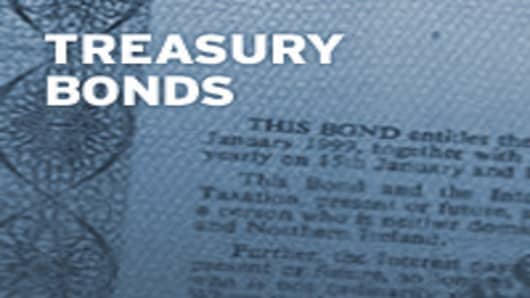Pimco's decision to dump Treasury bonds from its biggest bond fund is being called a smart move by investment pros—and one that individual investors might want to follow.
Pacific Investment Management Co.'s Total Return is the largest bond fund in the world at $236.9 billion in assets, but no longer contains direct exposure to a straight Treasurys allocation.
Instead, the company has reduced its US debt exposure to Treasury bills and some repos, Pimco managing director Bill Gross told CNBC in a Wednesday interview.
"We still have Treasurys," he said. "They just happen to be in a maturity classification of less than 12 months."
Sentiment around the fixed-income sphere is that Pimco is merely biding its time until government debt prices get cheaper and yields start to rise, essentially confirmed by Gross when he said yields are not attractive enough at this point.
"Obviously it wasn't good news that Pimco dumped all of its holdings. But it's kind of suggestive of where they expect Treasurys to go in the future," says Kim Rupert, managing director of US fixed income analysis for Action Economics in San Francisco. "I don't think it's a surprise that they expect yields to go higher."
The Pimco move actually came earlier in the year though the news surfaced Wednesday.
What time frame Pimco may have on how long it will stay out of Treasurys and what price-yield scenario might trigger an entry point is still a question mark.
"It was a trade for Pimco," Rupert says. "They're a bond fund, so they're going to have to be invested in bonds in some manner or form. They figured it was an opportune time to get out and get into cash. It's kind of an uncertain environment."
The news has had little effect on bond prices, which have been climbing in the past sessions as this week's auctions went well and a Moody's downgrade of Spainrenewed concerns over sovereign European debt.
Nevertheless, the move drew plaudits from traders.
"It sounds completely logical to me what Pimco was doing," says Kevin Ferry, president of Cronus Futures Management in Chicago. "What was really amazing was that he was definitely able to move what was an aircraft carrier (of debt) in a creek of liquidity. There's every reason to reduce your exposure."
For retail investors, the best strategy might be to ladder maturities out to the longer end of the bond curve, a move that can be accomplished with the iShares Barclays 20+ Year Treasury ETF, which rewards price gains in longer-duration government bonds.
The question of who will be buying Treasurys is relevant as the final months count down in the Federal Reserve's program to buy another $600 billion in mostly shorter-term debt. Gross himself asked recently in an analysis who would buy Treasurys once the central bank backs out.
His general insinuation was that the Fed along with other global central banks—and Pimco—will continue to buy Treasurys in the future but will demand a better return for their money.
Investors already have shown signs of growing impatient with low rates on US debt.
"When I look at the improving fundamentals of the US economy and deficits of the US, a higher rate structure in the US is reasonable," says Jessica Hoversen, fixed income analyst at MF Global. "However, the key is identifying what rate level will truncate the recovery."
Hoversen says short-covering has become prevalent, which is "a reflection of macro risks" such as conflict in the Middle Eastand the resulting increase in gas prices.
With that geopolitical turbulence, however, comes a natural safety bid that leads investors into Treasurys.
So those looking for a bargain on the scads of government debt might have a bit of a wait.
"We're a little worried about the positioning of a lot of people short in this market. I think it's a very crowded trade at this point," says Chris Diaz, portfolio manager for the ING Global Fund. Diaz believes the yield on the 10-year note is likely headed to 4 percent or higher, but probably won't make a big move in the near term.
"We're not sure Treasury yields won't be a little lower," he says. "There would certainly have to be a cheaper level from here for us to want to add more Treasurys to our portfolio."



